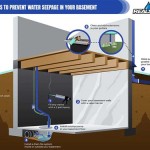Essential Aspects of Cat Doors for Basement Doors
If you're a cat owner and want to provide your feline friend with convenient access to the outdoors, a cat door for a basement door is an excellent solution. Here are some essential aspects to consider when choosing and installing a cat door for your basement:
1. Type of Cat Door:
There are two main types of cat doors for basement doors: flap doors and tunnel doors. Flap doors are the most common and consist of a hinged flap that cats can push through. Tunnel doors, on the other hand, provide a more enclosed space for cats, with a tunnel-like structure leading from one side of the door to the other. Consider the size and agility of your cat when choosing the type of door.
2. Material and Durability:
Cat doors for basement doors come in various materials, including plastic, metal, and aluminum. Plastic doors are lightweight and affordable, but they may not be as durable as metal or aluminum doors. Metal doors offer greater durability and security, while aluminum doors are a lightweight and rust-resistant option.
3. Size and Dimensions:
Ensure the cat door you choose is the right size for your cat. Measure your cat's height and weight to determine the appropriate size and dimensions. The door should be large enough for your cat to pass through comfortably but not so large that it poses a security risk.
4. Energy Efficiency:
If your basement is insulated, consider choosing a cat door with weatherstripping or insulation to prevent heat loss during colder months. This will help maintain comfortable temperatures inside your home while allowing your cat to access the outdoors.
5. Security Features:
Cat doors for basement doors should have security features to prevent unauthorized entry. Look for doors with locking mechanisms, magnetic flaps, or other features that deter intruders. This is especially important if your basement contains valuable belongings or if your cat is prone to escaping.
6. Installation:
Installing a cat door in a basement door requires some preparation. Determine the location of the door, making sure it's accessible for your cat while not interfering with other door functions. Follow the manufacturer's instructions for proper installation, including using the right tools and materials.
7. Training Your Cat:
Once the cat door is installed, it's crucial to train your cat to use it. Start by placing treats near the door and gradually moving them through the opening. Once your cat is comfortable going through the door, show them how to activate the flap or tunnel. Be patient and provide positive reinforcement throughout the training process.
By considering these essential aspects when choosing and installing a cat door for your basement door, you can provide your feline companion with secure, convenient, and energy-efficient access to the outdoors.

Basement Cat Door Transitional Minneapolis By Fbc Remodel Houzz Ie

Article And Tips For Your Beloved Kitty Catorcat Com Cat Door Litter Box Ramp

Learn How To Install A Simple Diy Cat Door For An Interior

Pet Door Cat Basement

Cat Door To The Basement I Was Tired Of Opening And Closing Hidden Litter Boxes

A Simple Latch Happy Cat And Dog Free Basement Bob Vila

Cat Door Window Insert Beautiful Plexiglas Base Free Shipping Flap Fever Industries

Cat Door Customer Photos Small Basement Remodel Room Layout Remodeling

8 Design Tips To Hide Your Cat S Litter Box

Replacing A Basement Door For Free Chatfield Court








